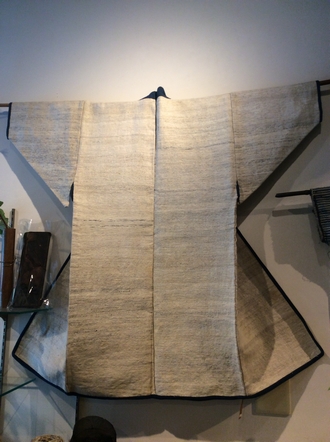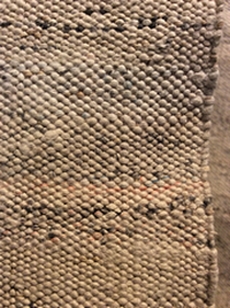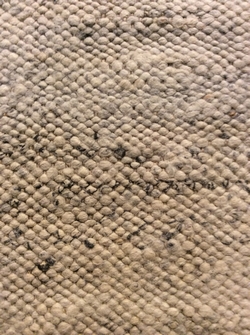Copyright 2002 Gallery Kei. All rights reserved.
太布 紙 紙布展
An Exhibition of Mulberry Paper and cloth
An Exhibition of Mulberry Paper and cloth

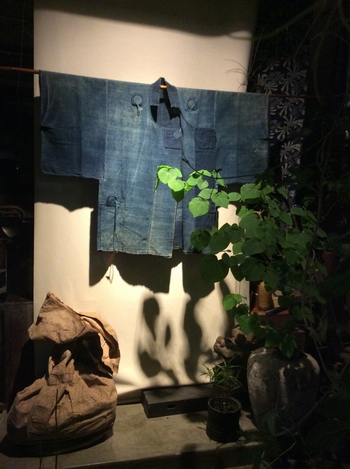
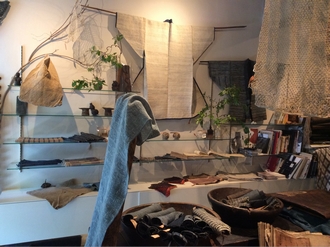
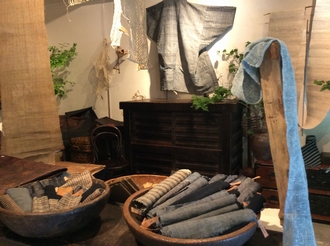
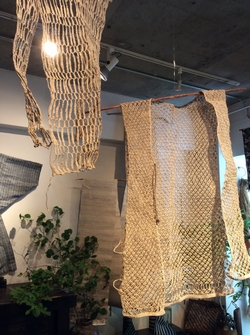
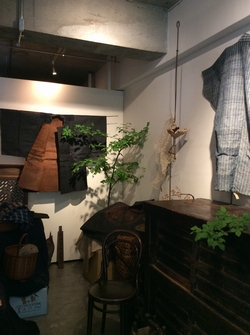
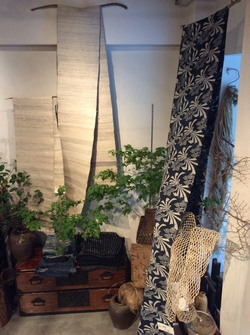
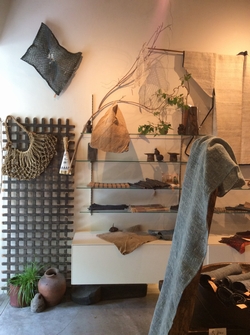
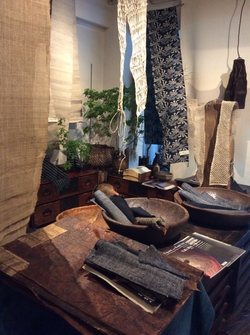
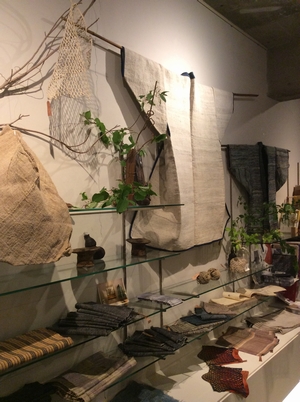
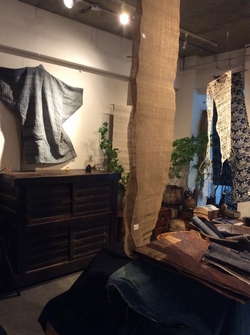
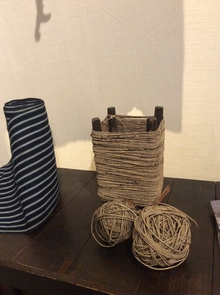
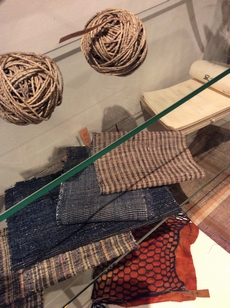
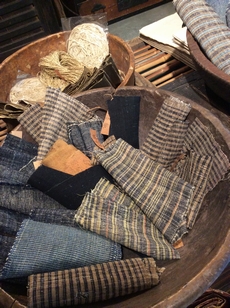
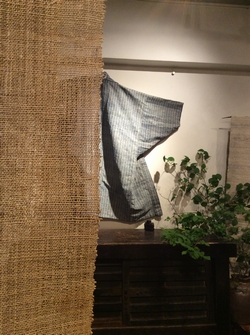
楮や梶は紙の材料としてよく知られているが
中国から紙の製法が伝わる以前 四国地方で梶、楮から繊維を取って糸にして布を織っていた太布(たふ)の事はあまり知られていない。オヒョウや藤布と同じように人々の着るものや袋などにして日常に溶け込んでいた。現在は徳島の木頭村で保存伝承が行われている。
たふ
太布
Tafu
Mulberry cloth
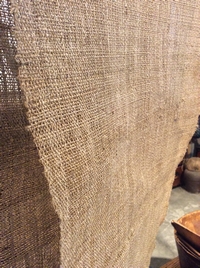
太布
Tafu
Mulberry cloth

A special variety of the mulberry tree referred to as paper mulberry yields a fiber that is well known for its use in papermaking in Japan.
However, long before the technique of papermaking was brought from China,
paper mulberry fibers were used to make thread for weaving cloth in Shikoku
area.This cloth, called Tafu., was used for both garments and utilitarian sacks by common people. The tradition of paper mulberry cloth is continued by people in Kitoson,Tokushima Prefecture.
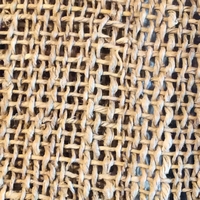
太布(たふ)
Tafu mulberry cloth
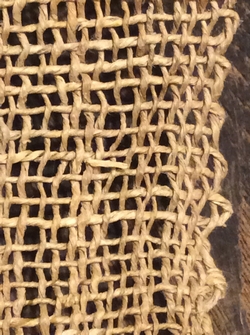
角袋
太布(たふ)
Tafu mulberry cloth
Horn bag
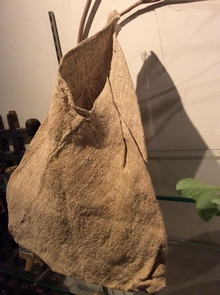
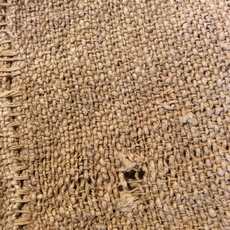
太布(たふ)
Tafu mulberry cloth
かみこ
紙衣
Kamiko
Mulberry paper
中国から韓国を通って7世紀頃に紙の製造が伝わり
次第に紙漉が盛んになると、様々な用途に紙は使われていった。厚手の紙に柿渋と油を塗った物は防水に優れ、番傘や紙衣(かみこ)と言われる道中着などに使われた。
Papermaking from paper mulberry became
popular and was used in various ways in Japanese daily life. Thick paper
infused with persimmon tannin and oil was used for making both umbrellas
and
dochugitraveling
coats,called
Kamiko, because
of its excellent waterproof properties.
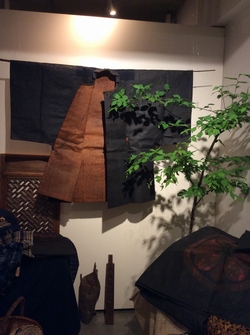
紙:道中着
Dochugi traveler's coat, kamiko paper cloth

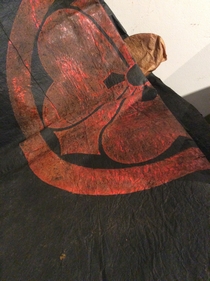
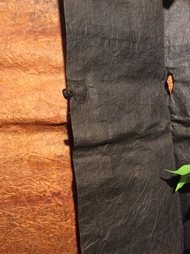
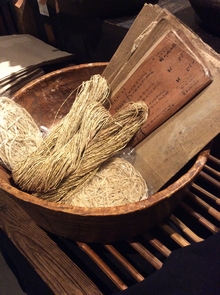
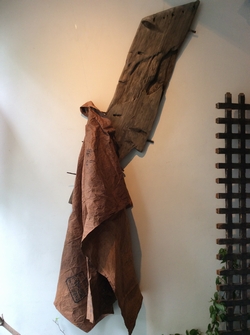
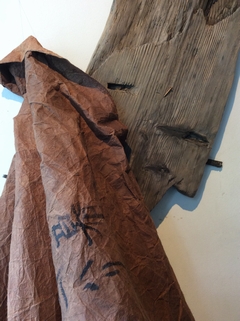
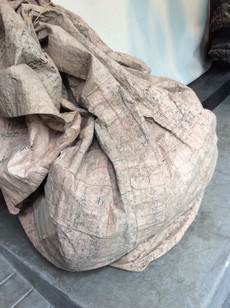
反故紙の袋
Bag made from recycled paper
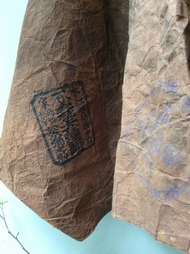

大福帳等の使用済みの紙も捨てる事はせずに、細く切って糸にし、織物の、主に横糸に使われた。これを紙布(しふ)と言う。軽い、暖かい、何より捨てないで再利用するのが当たり前の時代の産物であろう。
しふ
紙布
Shifu
Paper thread
紙布
Shifu
Paper thread
Paper production required extensive labor, and people were careful to recycle used paper as much as possible. They cut paper that had been used into long narrow tape-like strips in order to create long thread.
This thread was woven as weft into beautiful cloth called Shifu, with silk or cotton used for the warp. Though turning used paper into weaving yarn was hard work, it provided both softness and warmth to the cloth, and a practice encouraged by traditional attitudes towards conservation and avoiding waste.
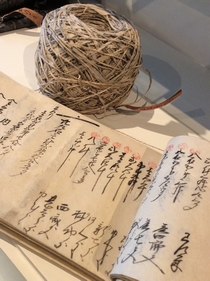
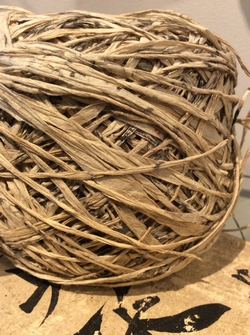
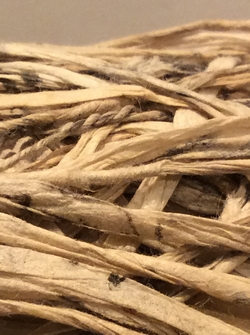
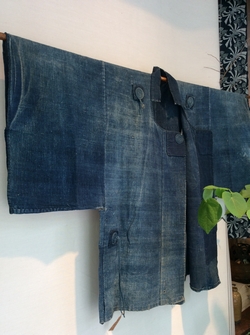
たて糸:木綿、よこ糸:紙 道中着 江戸時代
Warp: cotton; weft: paper Dochugi traveler's coat Late Edo period (Middle 19 century)
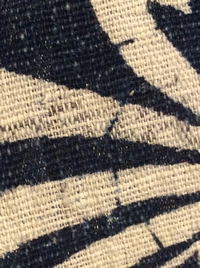
たて糸:木綿、よこ糸:反故紙
Warp: cotton; weft: recycled paper
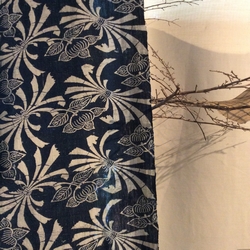

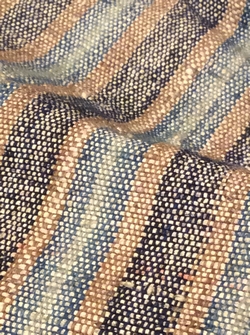
たて糸:木綿、よこ糸:反故紙
Warp: cotton; weft: recycled paper

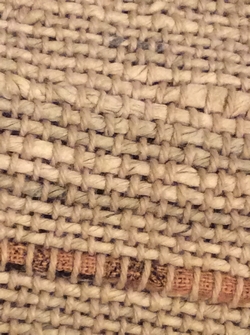
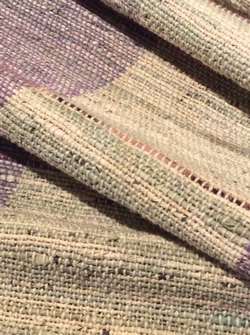
たて糸:木綿、よこ糸:反故紙
Warp: cotton; weft: recycled paper
and rag-weave
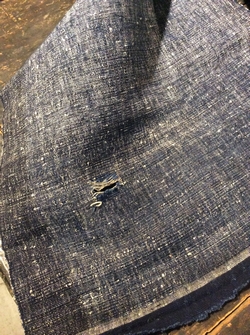
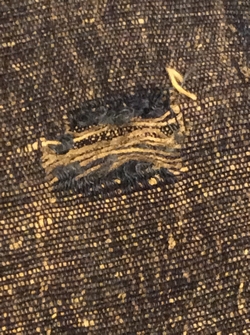
たて糸:木綿、よこ糸:反故紙
Warp: cotton; weft: recycled paper
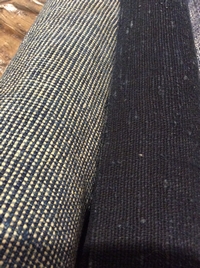
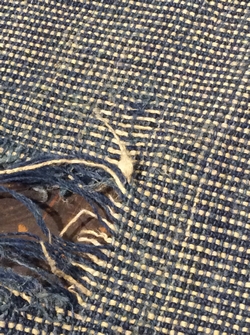
white weft thread: paper
白糸:紙
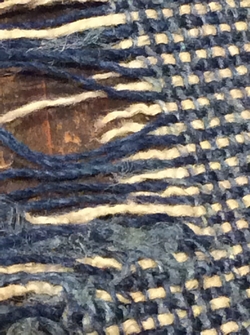
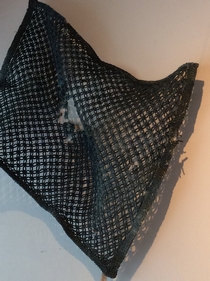
紙縒(こより)馬の腹掛け
Horse trapping, paper thread
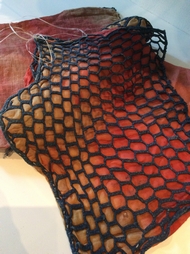
紙縒(こより)脚絆
Leg cover, recycled paper
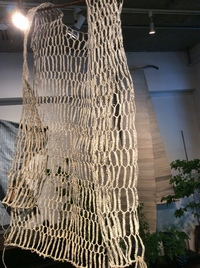
紙縒(こより):汗はじき
Undergarment, paper
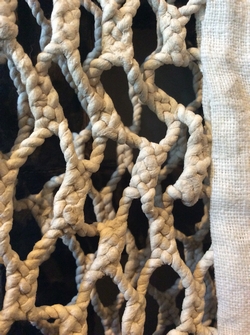
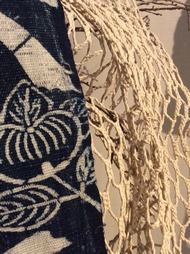
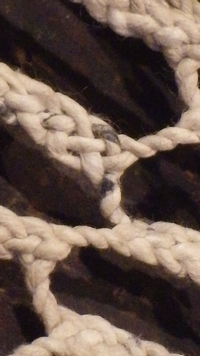


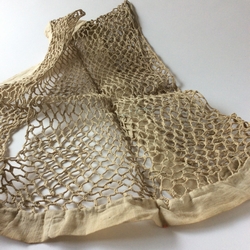
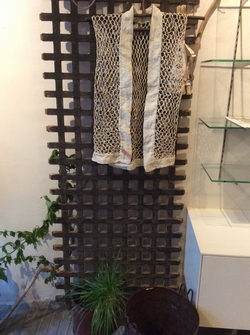
たて糸:木綿、
よこ糸:反故紙
Warp: cotton;
weft: recycled paper
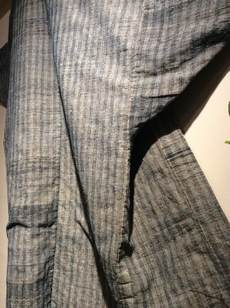
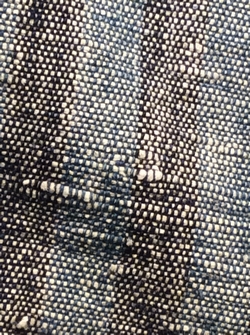
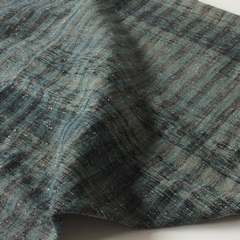
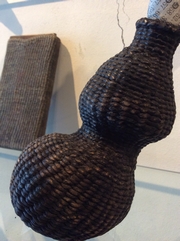
紙縒(こより)細工日本
Paper string from Japan

紙縒(こより)細工 韓国
Paper string from Korea
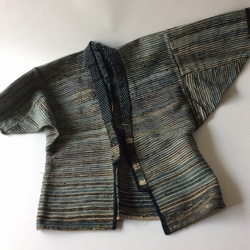
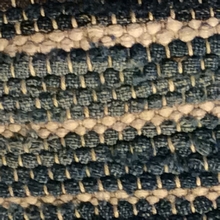
裂き織り よこ白糸: 紙
Sakiori rag-weave, white weft thread: paper
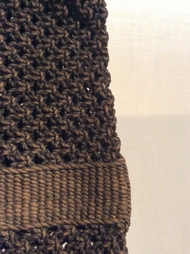
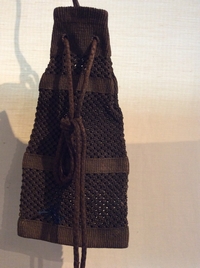
紙縒(こより)細工日本
Paper string from Japan
庄内帯 たて糸: 木綿 よこ糸:紙
Shonai-obi. warp: cotton; weft: paper
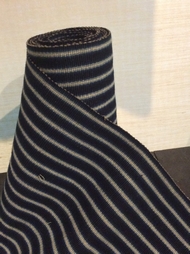
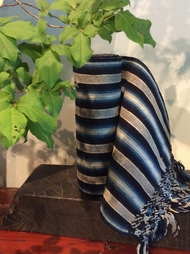
新潟県の山間部で織られて、庄内地方で売られていた仕事着は、たて糸は藤の糸であるが、
横糸に 、使用済みの紙を糸にして藤糸に巻いた糸を使用している。おおつづれと言う。
紙を巻く事により、藤だけで織った感触よりも暖かく、柔らかさを求めた結果であろう。
横糸に 、使用済みの紙を糸にして藤糸に巻いた糸を使用している。おおつづれと言う。
紙を巻く事により、藤だけで織った感触よりも暖かく、柔らかさを求めた結果であろう。
おおつづれ
Otsuzure
Otsuzure
Of note, until the early 20th century, there were very unusual types
of cloth and work garments made from paper in what are now modern Niigata
and Yamagata prefectures. One example consisted of wisteria
thread used for the warp and wisteria thread wrapped with recycled paper
for the weft thread. We call it "Otszure"
and it is a warmer and softer textile than cloth which contains no paper.
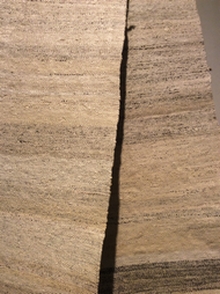
たて糸:藤 よこ糸: 藤糸に反故紙を巻いた糸
Warp: wisteria; weft: wisteria thread wrapped
with recycled paper
